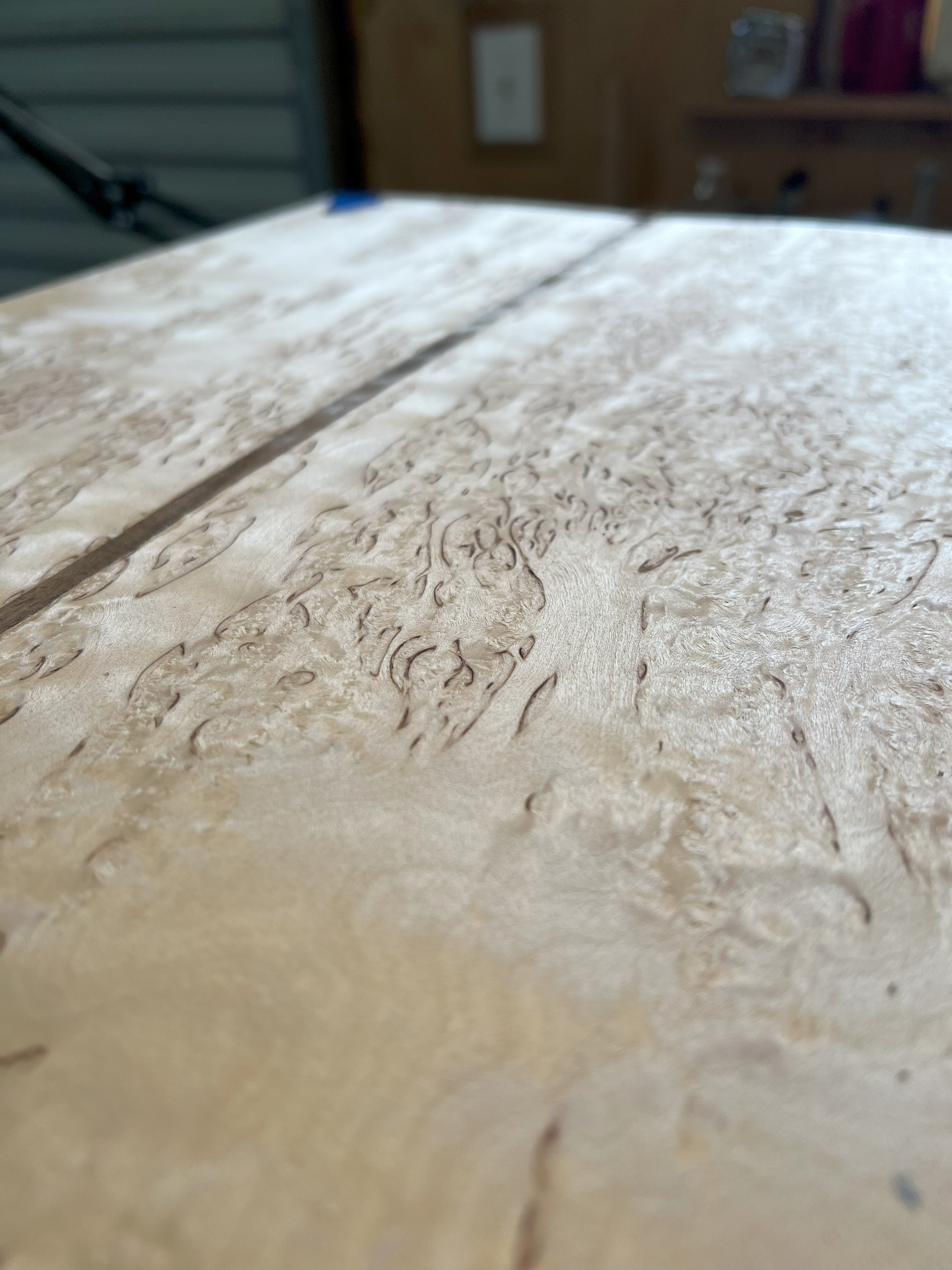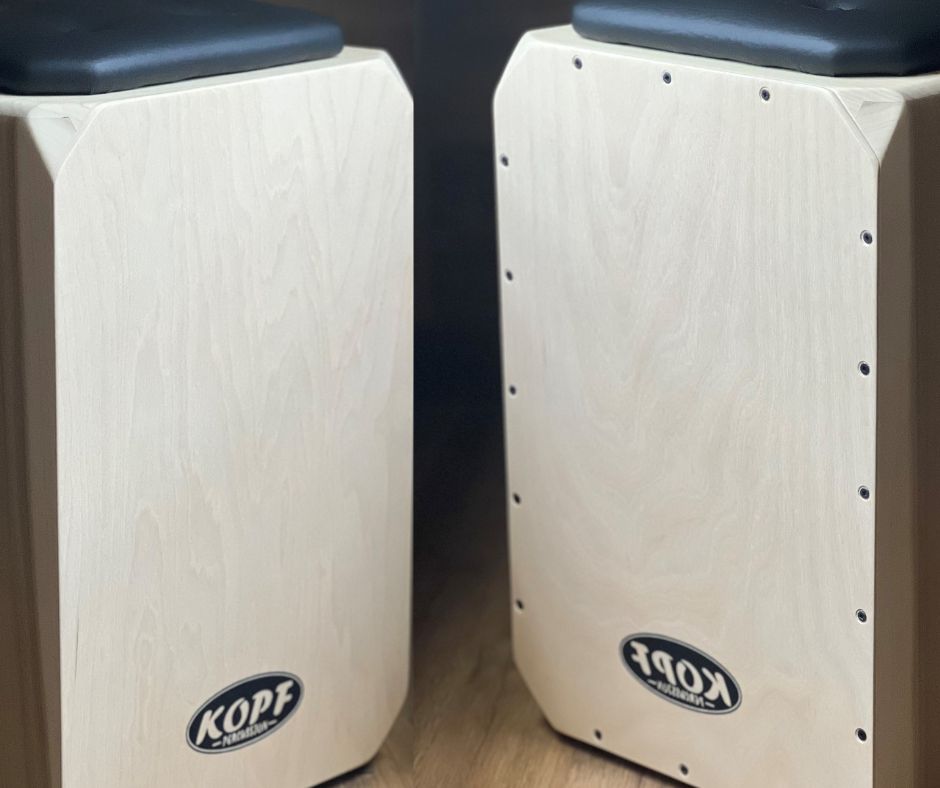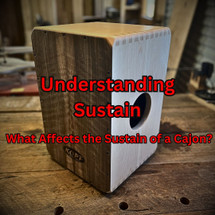Posted by Steve Head on 25th Aug 2024
Understanding Sustain: What Affects the Sustain of a Cajon?
When it comes to the sound of a cajon, sustain is one of the key factors that contribute to its overall tonal quality. Sustain refers to the length of time the sound continues after the initial strike, creating the resonance that defines the cajon’s character. Whether you’re looking for a cajon with a long, rich sustain or a short, tight one, it’s important to understand the elements that affect this aspect of the instrument. In this blog post, I’ll break down what influences the sustain of a cajon and how these factors can shape the sound to suit your musical needs.
1. Material of the Tapa

- Impact on Sustain: The material used for the tapa, or front face, plays a crucial role in the sustain of a cajon. Harder woods, such as birch or mahogany, tend to produce longer sustain due to their dense structure, which allows the sound to resonate more effectively. Softer woods, on the other hand, may produce a shorter sustain with a quicker decay, leading to a more controlled, dry sound.
- Example: At Kopf Percussion, I carefully select tapa materials based on the desired tonal qualities, ensuring that each cajon produces the right amount of sustain for its intended use.
2. Thickness of the Tapa

- Impact on Sustain: The thickness of the tapa also significantly affects sustain. A thinner tapa allows for greater vibration, leading to a longer sustain as the sound waves have more room to move. Conversely, a thicker tapa may result in shorter sustain, providing a more immediate, percussive sound.
- Example: Depending on the style of music and the player's preference, I might recommend a thinner tapa for those seeking a resonant, sustained sound, or a thicker tapa for a more focused, punchy tone.
3. Tuning and Tension

- Impact on Sustain: The way a cajon is tuned and the tension of the tapa can greatly influence sustain. Tighter tuning often results in a shorter, more controlled sustain, as the increased tension reduces the vibration time. Looser tuning, on the other hand, can lead to longer sustain by allowing the tapa to vibrate more freely.
- Example: Some of my cajon models feature adjustable screws, allowing players to fine-tune the sustain to match their performance needs. This flexibility is particularly useful for musicians who play a variety of genres and need to adapt their sound. With that said, I also have cajons that the Tapa is glued to the body to maximize the sustain.
4. Snare System and Internal Design
- Impact on Sustain: The presence of a snare system inside the cajon can also affect sustain. Snares add a layer of complexity to the sound, often shortening sustain by introducing a crisp, snappy element that contrasts with the natural resonance of the wood. The internal design, including the placement and type of snare wires or strings, plays a crucial role in determining how the cajon sustains its sound.
- Example: In my S-Series Snare Cajons, I design the snare system to provide a balance between snare response and sustain, ensuring that neither element overpowers the other. This creates a versatile sound that works well in various musical contexts.
5. Size and Shape of the Cajon
- Impact on Sustain: The overall size and shape of the cajon influence its acoustic properties, including sustain. Larger cajons generally have more internal space, allowing for longer sustain as the sound waves have more room to resonate. The shape of the cajon, particularly the dimensions of the sound chamber and the placement of the sound hole, also affects how sound waves are projected and sustained.
- Example: At Kopf Percussion, I design each cajon with specific dimensions that optimize both sustain and overall tonal balance, ensuring that the instrument delivers the sound quality players expect.
6. Playing Technique
- Impact on Sustain: While the construction of the cajon is fundamental, the player’s technique also significantly impacts sustain. Striking the tapa with more force can lead to a stronger initial sound with a longer sustain, while lighter touches may produce a quicker decay. Additionally, playing closer to the center of the tapa typically results in longer sustain compared to striking near the edges.
- Example: I often recommend that players experiment with different striking techniques to explore the full range of sustain their cajon can produce, adjusting their approach to match the musical style or specific performance needs.
7. Environmental Factors
- Impact on Sustain: Finally, environmental factors such as humidity and temperature can affect the wood’s properties and, consequently, the sustain of the cajon. High humidity levels can cause the wood to absorb moisture, potentially shortening sustain by dampening the vibrations. Conversely, dry conditions might enhance sustain by allowing the wood to vibrate more freely.
- Example: To maintain optimal sustain, it’s important to store your cajon in a stable environment, avoiding extreme temperature and humidity fluctuations that could impact its sound.
Conclusion: Crafting the Perfect Sustain
Understanding what affects the sustain of a cajon is key to shaping your instrument’s sound to match your musical goals. From the choice of materials to the internal design and playing technique, every detail plays a part in determining how long and resonant the cajon’s sound will be. Whether you prefer a long, rich sustain or a short, punchy tone, knowing how these factors interact allows you to choose or customize a cajon that perfectly fits your style.
Here is an interesting article by Carolina Drum Works: Resonance Vs. Ring vs. Sustain
At Kopf Percussion, I’m committed to crafting cajons that offer the perfect balance of sustain, attack, and overall tonal quality. Each cajon is designed with careful attention to detail, ensuring that you get the best possible sound for your music. If you’re interested in exploring my handcrafted cajons and finding the one that’s right for you, check out my collection here. Let’s work together to create the perfect sound for your playing style.


